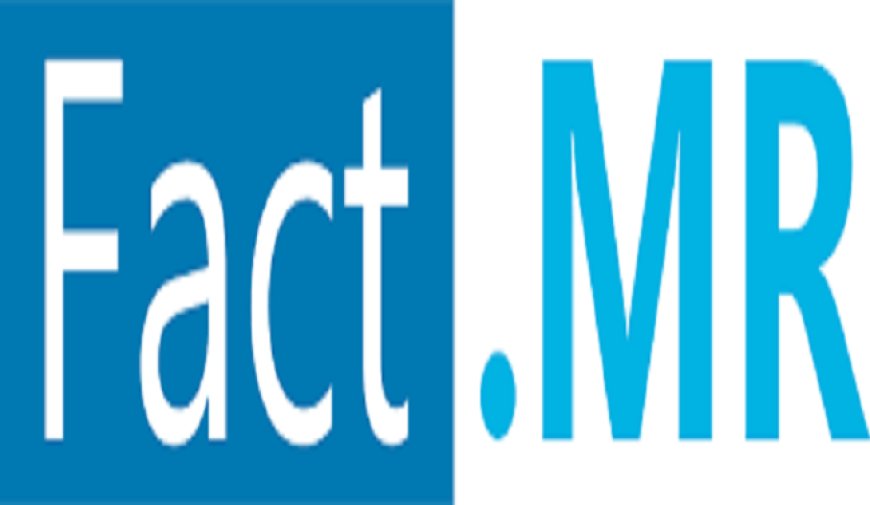Global Automotive Tail Light Market Grew at a 4% CAGR from 2015-2021
The global Automotive Tail Light Market was valued at USD 12.2 billion in 2022 and is projected to grow at a robust CAGR of 6% from 2022 to 2032, reaching USD 22 billion by 2032.

The global Automotive Tail Light Market was valued at USD 12.2 billion in 2022 and is projected to grow at a robust CAGR of 6% from 2022 to 2032, reaching USD 22 billion by 2032.
The automotive tail light market plays a crucial role in the overall automotive lighting sector, ensuring vehicle safety and enhancing aesthetics. Tail lights are an essential part of vehicle lighting systems, helping improve visibility during low-light conditions, signaling turns or stops, and increasing vehicle visibility on the road. In modern vehicles, automotive tail lights not only serve functional purposes but also offer design elements that contribute to a vehicle’s overall appeal. The growing demand for safety features and the rise in automotive production globally are contributing to the expansion of the automotive tail light market. Additionally, technological advancements, such as LED and OLED lighting, are transforming tail light designs, offering brighter and more energy-efficient solutions compared to traditional incandescent bulbs.
Want Full Report? Enquire Here-https://www.factmr.com/report/3/tail-light-market
Market Insights
The automotive tail light market is influenced by various factors, such as consumer preferences, technological innovations, and regulatory standards. Consumer demand for advanced and stylish vehicle lighting is driving the shift toward more innovative tail light solutions. LED technology, for example, has gained popularity due to its energy efficiency, longer lifespan, and better illumination compared to traditional options. Moreover, as automakers focus on providing improved safety features in their vehicles, the demand for enhanced tail lights with functions like adaptive brake lights, sequential turn signals, and emergency warning systems is also growing. Automotive tail lights are now designed to integrate with other vehicle systems, offering features like automatic light adjustment and smarter signal indicators.
Market Outlook
The automotive tail light market is expected to continue its upward trajectory over the coming years, fueled by several factors. With the rise in electric and hybrid vehicles, there is an increasing need for more efficient and eco-friendly lighting solutions. Electric vehicles, in particular, are contributing to the growth of energy-efficient technologies, including LED and OLED tail lights, which are becoming standard in many new models. The increasing adoption of smart car technologies is another factor that promises to drive growth. As vehicles become more connected, the integration of advanced lighting systems with autonomous driving features, such as automatic lane-change signaling and emergency braking indicators, will significantly influence the tail light market. Furthermore, the increasing awareness about road safety and the growing number of vehicles on the road are further driving the demand for advanced lighting technologies, including those in tail lights.
Automotive Tail Light Market: Key Market Players
- General Electric Company
- HELLA KGaA Hueck & Co.
- Koito Manufacturing Co. Ltd.
- Valeo S.A
- Koninklijke Philips N.V
- OSRAM Licht AG
- Phoenix Lamps Limited
- Robert Bosch Limited
- Others
Recent Industry News
The automotive tail light market has seen several notable developments in recent years, driven by advancements in technology and shifting consumer preferences. For instance, automakers have increasingly adopted LED and OLED technologies for their tail light designs due to their energy efficiency and enhanced aesthetic appeal. In recent news, several major automakers have introduced innovative tail light systems that feature advanced functions such as sequential lighting and dynamic brake lights, which provide better communication to drivers behind the vehicle. In 2023, leading automotive suppliers unveiled new tail light models designed to work seamlessly with autonomous vehicles, reflecting the industry’s move toward integrating advanced lighting systems with self-driving car technologies. Moreover, regulatory bodies in various regions are actively working to introduce more stringent standards for vehicle lighting, ensuring improved visibility and safety, which is likely to impact the design and production of automotive tail lights.
Notable Developments
Several notable developments have taken place in the automotive tail light market, reflecting the industry’s continuous focus on innovation and sustainability. Automakers are investing heavily in research and development to create more energy-efficient, durable, and visually striking tail light designs. One key development is the adoption of OLED technology, which offers flexible and customizable lighting designs that can be incorporated into the rear end of vehicles. Additionally, some manufacturers are exploring the use of laser technology to create even brighter and more efficient tail lights. Another significant development is the growing trend of adaptive lighting systems, where the tail lights adjust their brightness based on environmental conditions or driving speed, providing optimal visibility and safety. As automakers continue to embrace smart technologies, the integration of sensors, telematics, and even autonomous features in tail light systems will likely become a key focus of innovation in the coming years. These developments ensure that the automotive tail light market remains at the forefront of technology and consumer demands.
Competitive Landscape
Prominent automotive tail light providers are focusing on partnerships, collaborations, acquisitions, and the launch of new software to maintain their position in the global market. Constant innovation to ensure seamless client-customer relationships remains a key priority for these market leaders. For example, in August 2021, lighting and electronics specialist HELLA and French automotive supplier Faurecia entered into an agreement to combine their businesses. As part of the deal, Faurecia acquired the 60% stake held by HELLA's pool shareholders and also made a voluntary public tender offer to acquire the remaining HELLA shares at €60 per share. In April 2022, Bosch further strengthened its presence in the automated vehicle market by acquiring automated driving startup Five. Although the financial details were undisclosed, the acquisition will enable Bosch to advance its development of self-driving cars, with the software engineering teams from Five merging into Bosch's cross-domain computing solutions division.












